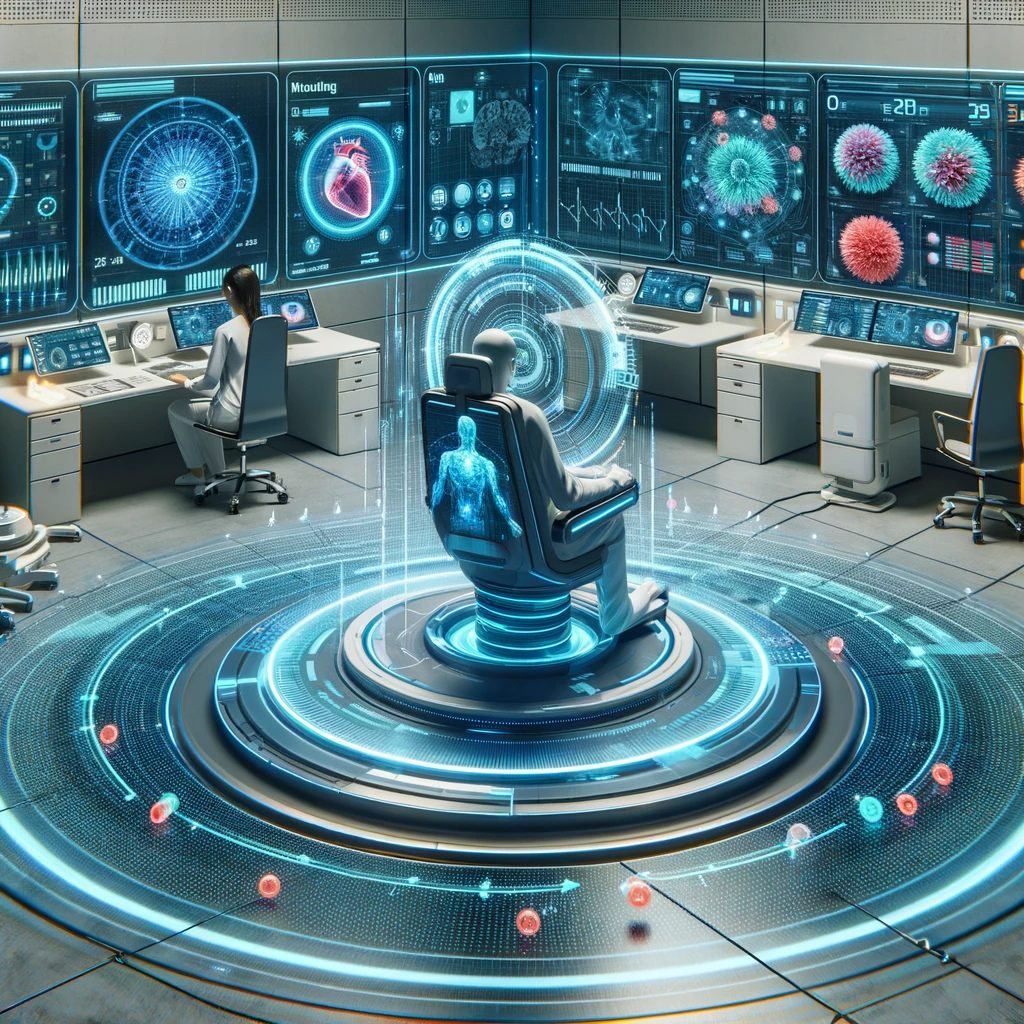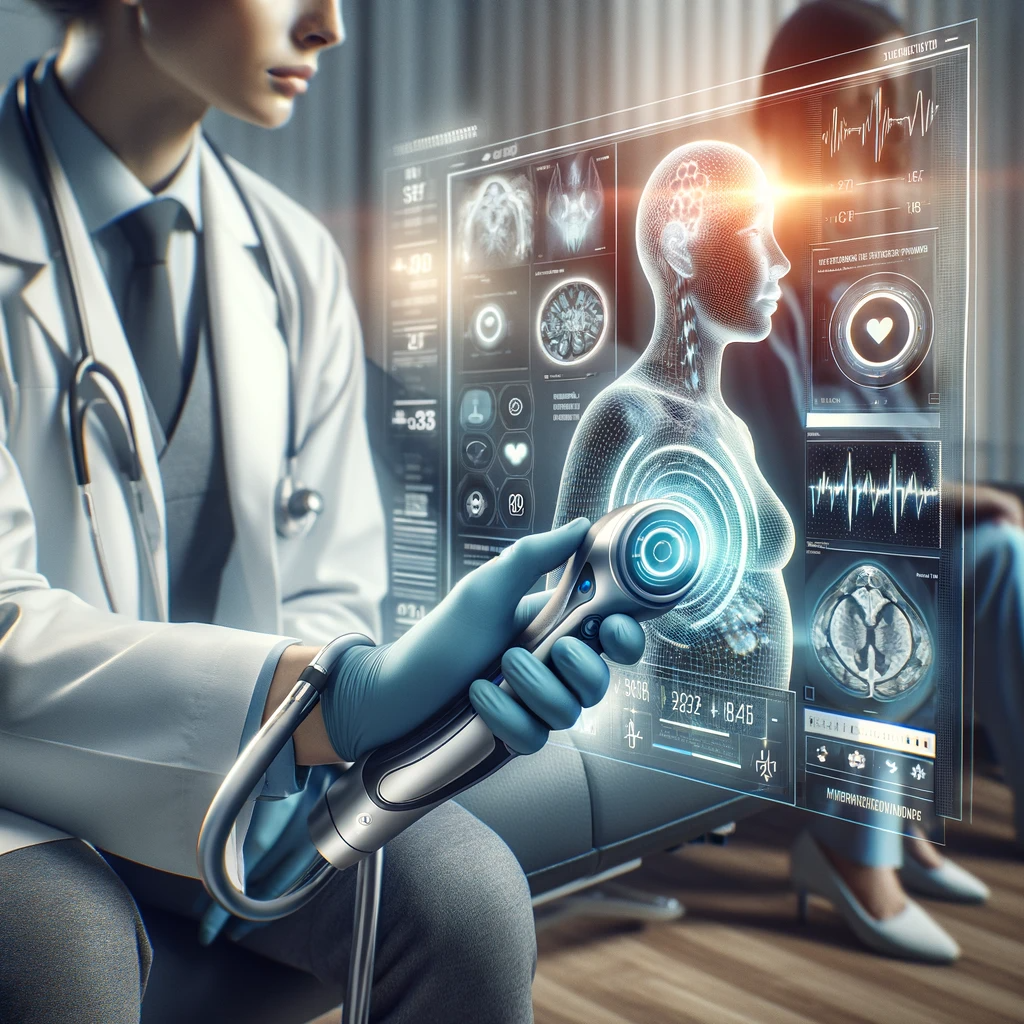In the rapidly evolving landscape of healthcare, artificial intelligence (AI) has emerged as a powerful force with the potential to transform various aspects of medical practice. One area where AI is making significant strides is in non-invasive medical diagnostics. Traditionally, medical diagnoses often required invasive procedures, which could be uncomfortable, risky, and costly for patients. However, AI-driven advancements are paving the way for more accurate, efficient, and non-invasive diagnostic techniques, ultimately improving patient care and outcomes.
In this comprehensive exploration, we delve into the fascinating world of non-invasive medical diagnostics and how AI is poised to lead to groundbreaking developments in this field. We’ll examine the challenges and opportunities, current applications, and the future potential of AI in reshaping the way healthcare professionals diagnose and monitor various medical conditions without the need for invasive procedures.
The Landscape of Medical Diagnostics: A Historical Perspective
Before delving into the role of AI in non-invasive diagnostics, it’s essential to understand the historical context of medical diagnostics and the prevailing reliance on invasive procedures. For centuries, physicians primarily relied on their clinical acumen, basic physical examinations, and sometimes invasive techniques to make diagnoses.
Invasive procedures, such as biopsies, exploratory surgeries, and even diagnostic radiological interventions, often carried inherent risks, discomfort, and financial burdens for patients. The quest for more accurate and non-invasive diagnostic methods has been a constant endeavor in the medical field.
The Emergence of AI in Healthcare
Artificial intelligence, with its ability to analyze vast datasets and recognize patterns, began to gain prominence in healthcare during the early 21st century. AI algorithms have demonstrated remarkable capabilities in interpreting medical images, such as X-rays, MRIs, and CT scans, often outperforming human radiologists in identifying anomalies and diseases.
AI’s introduction into healthcare brought forth the promise of more accurate and efficient diagnostics, which sparked significant research and investment in this area. As AI technology continued to mature, its applications in non-invasive diagnostics expanded beyond radiology, encompassing a wide range of medical specialties.
The Role of AI in Non-Invasive Medical Diagnostics
1. Medical Imaging and Radiology
One of the most prominent applications of AI in non-invasive diagnostics is in medical imaging and radiology. AI-driven algorithms can analyze complex medical images swiftly and accurately, aiding in the early detection and diagnosis of various medical conditions.
For instance, in the field of oncology, AI-powered software can assist in identifying cancerous tumors in mammograms, reducing false positives and enabling earlier intervention. In cardiology, AI algorithms can analyze echocardiograms to assess heart function and detect anomalies, contributing to the non-invasive evaluation of heart health.

2. Dermatology
Dermatological diagnoses often involve invasive procedures like biopsies. AI is transforming this aspect of healthcare by enabling non-invasive skin condition assessments. Smartphone apps equipped with AI algorithms can analyze photos of skin lesions, moles, or rashes, providing preliminary evaluations and recommendations for further evaluation by healthcare professionals.
This approach not only reduces the need for unnecessary biopsies but also empowers patients to monitor their skin health conveniently.
3. Non-Invasive Blood Tests
Traditional blood tests often require the insertion of needles, which can be uncomfortable and anxiety-inducing for many patients. AI-driven innovations are paving the way for non-invasive blood tests that analyze a patient’s blood through techniques like spectroscopy, without the need for needles.
These non-invasive tests can provide valuable diagnostic information, including blood glucose levels, lipid profiles, and markers for various diseases, offering a less intimidating and more patient-friendly experience.
4. Virtual Health Assistants
AI-powered virtual health assistants are revolutionizing the way patients interact with healthcare providers. These virtual assistants can conduct non-invasive assessments through natural language processing and symptom analysis. Patients can describe their symptoms to these AI-driven systems, which can then provide preliminary diagnoses, offer healthcare advice, and recommend further steps.
Virtual health assistants enhance access to healthcare information and guidance while minimizing the need for invasive physical examinations in certain cases.
Challenges and Ethical Considerations
While the potential of AI in non-invasive medical diagnostics is vast, several challenges and ethical considerations must be addressed. These include data privacy concerns, the need for rigorous validation of AI algorithms, and ensuring that healthcare remains patient-centered and empathetic despite technological advancements.
The Future of Non-Invasive Diagnostics
The integration of AI into non-invasive medical diagnostics represents a paradigm shift in healthcare. As technology continues to advance, we can expect even more accurate, efficient, and accessible diagnostic methods that prioritize patient comfort and well-being.
AI-driven diagnostics will likely become increasingly specialized, catering to various medical fields, from neurology to gastroenterology. This specialization will enable healthcare providers to make more precise and timely diagnoses, ultimately improving patient outcomes.
Moreover, the potential for non-invasive diagnostics extends beyond medical facilities. Home-based diagnostic devices equipped with AI may become commonplace, allowing individuals to monitor their health more proactively.

Conclusion
The marriage of AI and non-invasive medical diagnostics holds immense promise for the healthcare industry and patients alike. As technology continues to evolve, we can anticipate a future where invasive procedures are increasingly replaced by accurate, efficient, and patient-friendly diagnostic methods.
The journey towards this future is marked by ongoing research, innovation, and ethical considerations. It is a testament to the transformative power of AI in healthcare, reaffirming its role as a cornerstone of medical progress and improved patient care.
